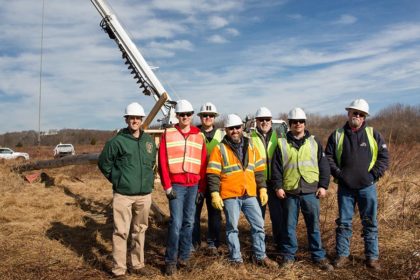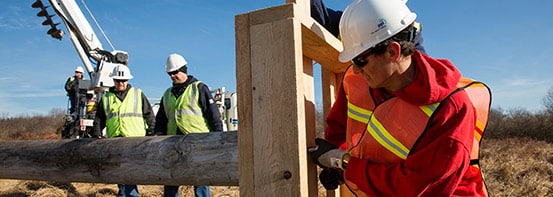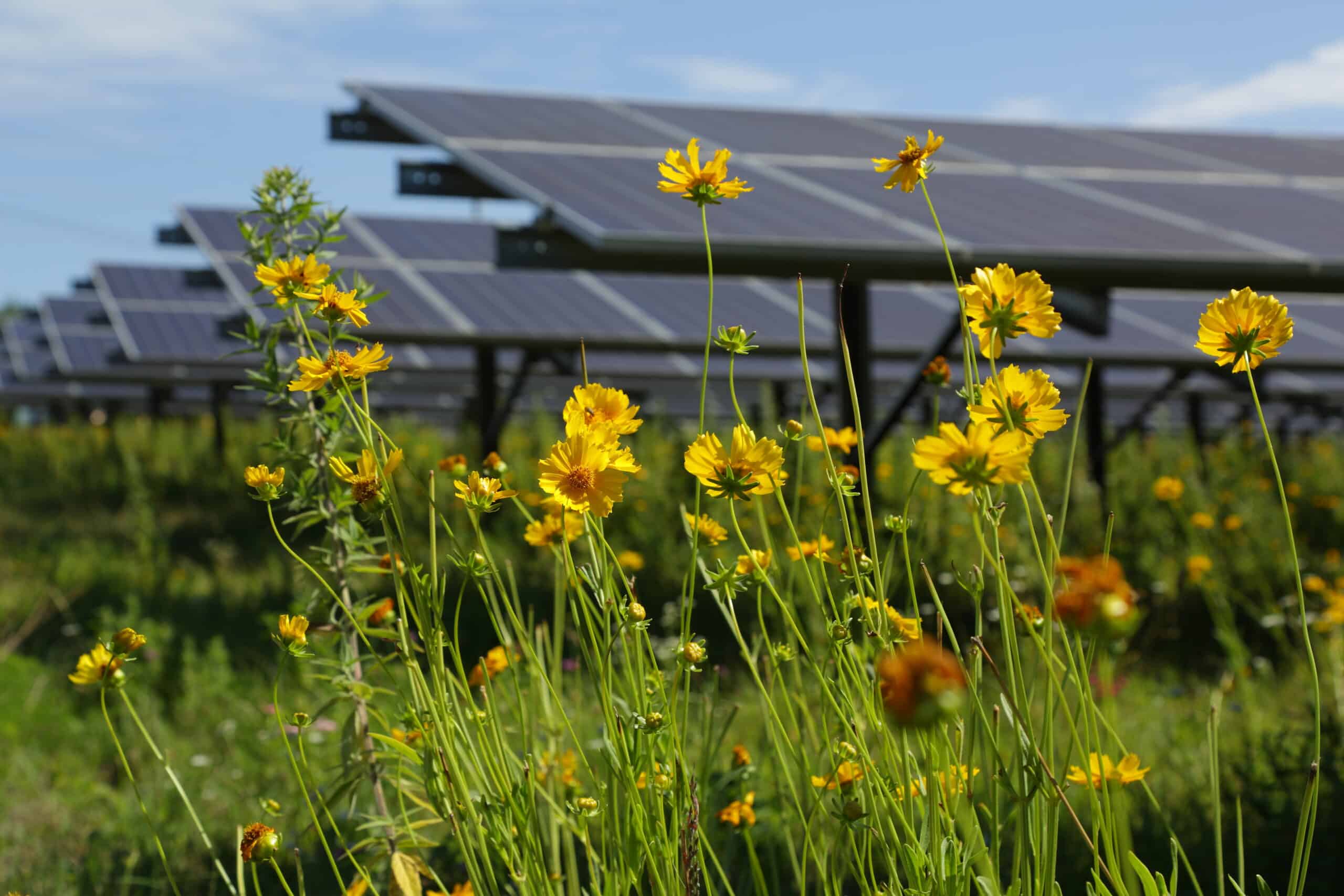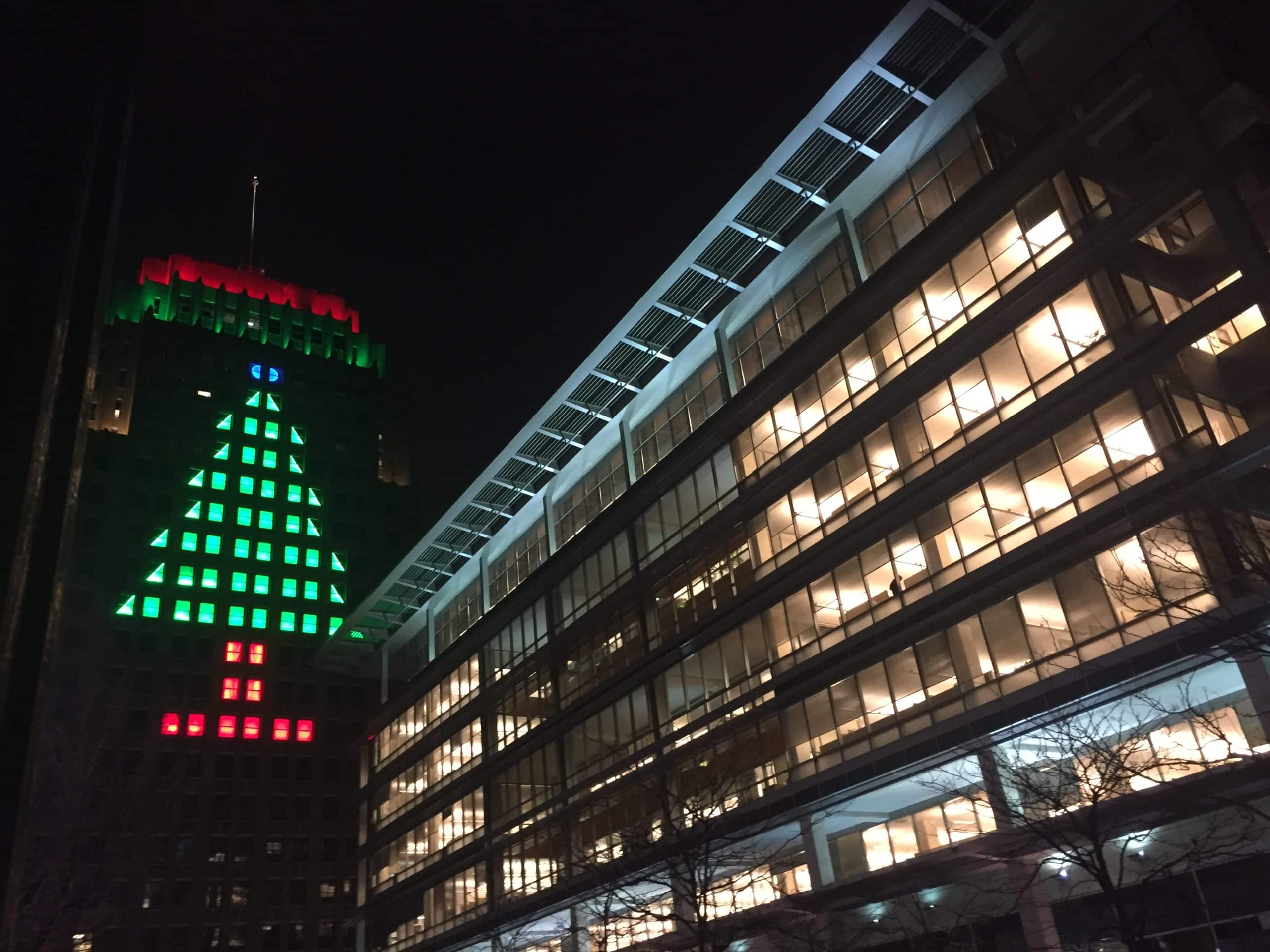Ospreys like to nest in an unfortunate location: utility poles. It’s a good vantage point that gives these fish-eating birds of prey a 360-degree view of the surrounding area, making it easy to look for fish and spot predators. But it’s not an appropriate habitat: Chicks risk electrocution as they learn to take off and land on the pole. And a pile of sticks and other materials used in a nest can result in power outages and even fires.
To help the birds and ensure their customers continue to have excellent and reliable service, PPL Electric, LG&E and KU, and WPD have all installed platforms in their service territories to provide safe locations for ospreys to nest. It’s part of the company’s continued commitment to conservation.
The platforms are built to a height above the surrounding tree line and near water where the birds can feed.

“There are very few natural nesting locations that are suitable for these birds, so they tend to use man-made structures for nests,” said Jeff Luzenski, a PPL senior environmental professional. “Providing them with a good nesting structure in an attractive location helps them survive and thrive.”
In addition to these osprey nesting platforms, PPL also has a long tradition of protecting peregrine falcons. A nest box at LG&E and KU’s Mill Creek Generation Station, for example, has been housing a peregrine falcon since 2006. In 2016, two female and two male chicks hatched in the box, where a live webcam enabled the community to watch the chicks grow and eventually take flight. More than 100 falcons have hatched from LG&E and KU’s nesting boxes.
These endeavors represent PPL’s commitment to being stewards of the environment and preserving and protecting nature in the areas where we do business.
“PPL has a longstanding history of helping Pennsylvania’s Game Commission,” said Luzenski. “We’ve helped out osprey, peregrine falcons and eagles. We’re uniquely positioned in that we have the equipment needed to do the work, and we have people who are willing to volunteer. This is just a continuing effort that we’ve had because it’s the right thing to do.”



